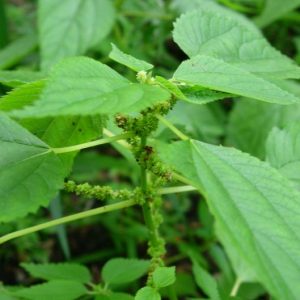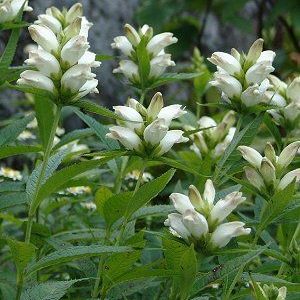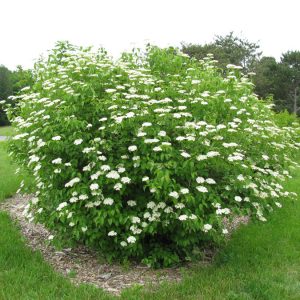
Boehmeria cylindrica – False Nettle
Host Plant – Red Admiral, Eastern Comma, Question Mark Preferring wet-mesic and semi-shady sites, Boehmeria cylindrica lacks the stinging hairs of some of its nettle cousins. Stringy heads of tiny yellow-green flowers form between leaf stems in summer. Moths and butterflies are attracted to this modest plant.

Chelone glabra – White Turtlehead
Host Plant – Baltimore Checkerspot
Spikes of elegant white flowers top shiny green foliage in late summer and early fall. Grows best in moist meadows, stream banks, and swamps. Favorite breeding site for the Baltimore Checkerspot Butterfly.

Viburnum dentatum – Arrowwood Viburnum
Easily grown in average, medium, well-drained soil in full sun to part shade. Prune immediately after flowering since flower buds form in summer for the following year.
Noteworthy Characteristics
Arrowwood viburnum is an upright, rounded, multi-stemmed, deciduous shrub which typically matures to 6-10′ tall with a similar spread, but may reach a height of 15′ in optimum growing conditions. Non-fragrant white flowers in flat-topped corymbs (to 4″ diameter) appear in late spring. Flowers give way to blue-black, berry-like drupes which are quite attractive to birds and wildlife. Ovate, toothed, glossy dark green leaves (to 4″ long). Variable fall color ranges from drab yellow to attractive shades of orange and red. Although widespread in eastern North America, this native plant is only known to exist in the wild in Missouri on wooded slopes along the Salt River in Shelby County. Native Americans reportedly used the straight stems of this shrub for arrow shafts, hence the common name.
Problems
No serious insect or disease problems.
